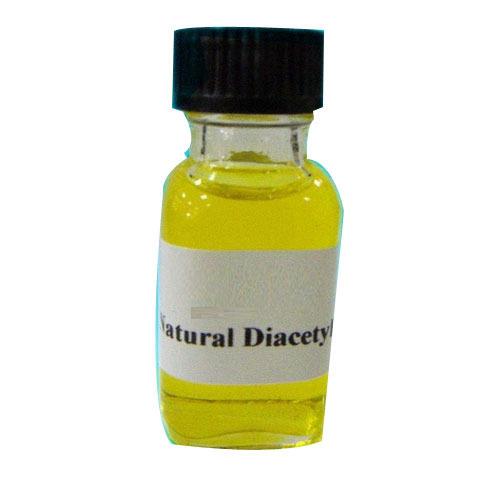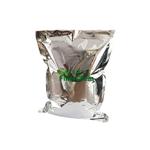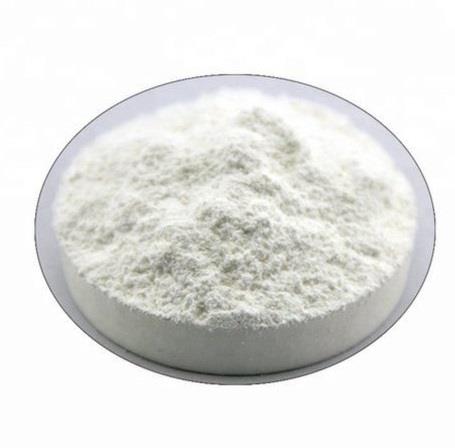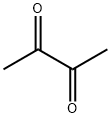Synthesize of Diacetyl
Jan 17,2022
Diacetyl is a water-soluble and volatile, alpha-diketone compound that has a buttery odor. Diacetyl occurs naturally in plants, fruits, coffee, honey, cocoa, and dairy products. It is a natural by-product of fermentation and is found in beer and wine. Diacetyl is also present in cigarette smoke.

Synthesize
Diacetyl can be synthesized by converting 2-butanone to an isonitroso compound and then hydrolyzing it with hydrochloric acid. Other methods for producing diacetyl include oxidation of 2-butanone over a copper catalyst at 300°C and dehydrogenation of 2,3-butanediol over a copper or silver catalyst. In addition, diacetyl can be synthesized through the acid catalyzed condensation of 1-hydroxyacetone and formaldehyde. Naturally occurring diacetyl is also available from starter distillate, a by-product of dairy product fermentation. Although diacetyl and starter distillates are liquids, they can be converted to a powdered form by encapsulating them within a solid material to prevent volatility. Diacetyl in powdered form is also found in flavorings that have been spray dried. The boiling point of diacetyl is 88°C with a calculated vapor pressure of 55 mmHg at 20°C.
Uses
Diacetyl is widely used in food and beverage flavorings. The principal types of flavorings that use diacetyl are dairy flavors, particularly butter flavorings but also cheese, milk, and yogurt. Diacetyl is sometimes an ingredient in the so-called brown flavors such as caramel, butterscotch, and coffee flavors. The diacetyl-containing flavors may be found in microwave popcorn, snack foods, baked goods, and candies. Diacetyl was evaluated and affirmed as a generally recognized as safe (GRAS) direct food additive by the FDA in the early 1980s. At that time, the FDA confirmed there was evidence that diacetyl was safe for ingestion in food under the intended conditions of use.
Mechanism of Toxicity
Diacetyl released to the environment is expected to be highly mobile in soil and is not expected to adsorb to suspended sediments and solids in water. Diacetyl is degraded by a bacterium tentatively identified as Pseudomonas. Bioconcentration of diacetyl by aquatic organisms is not likely. Diacetyl is expected to volatilize from soil and water surfaces, and diacetyl is likely to exist solely as a vapor in the ambient atmosphere. In the atmosphere, diacetyl is degraded by photochemically produced hydroxyl radicals and it undergoes photolysis.
Mechanisms of diacetyl-induced toxicity are not known, but some possible mechanisms of toxicity have been postulated. The adjacent carbonyl groups on diacetyl make it a reactive compound. In vitro studies have demonstrated that diacetyl can bind to arginine and inactivate proteins. The electron affinity of diacetyl suggests that it can undergo electron transfer activity, which can lead to oxidative stress by oxygen redox cycling. Redox cycling and oxidative stress may also be initiated during metabolism of diacetyl by DCXR (dicarbonyl/L-xylulose reductase). Reactive oxygen species are known to be produced from metabolic activation of dicarbonyl substrates by related carbonyl reductase enzymes in the presence of O2.
- Related articles
- Related Qustion
Dextromethorphan is in the morphinan class of medications with dissociative, and stimulant properties (at lower doses). Dextromethorphan does not have a significant affinity for the mu-opioid receptor activity typical of morphinan compounds....
Jan 17,2022APIDiazoaminobenzene (DAAB) is an aromatic amine that is a suspected carcinogen. It is harmful if inhaled, ingested, or absorbed through the skin. It causes skin irritation and severe irritation to eyes. DAAB can be made by diazotizing aniline....
Jan 17,2022Organic Chemistry2,3-Butanedione
431-03-8You may like
- 2,3-Butanedione
-

- $5.00 / 200kg
- 2025-12-18
- CAS:431-03-8
- Min. Order: 1kg
- Purity: ≥99%
- Supply Ability: 200mt/year
- 2,3-Butanedione
-

- $10.00 / 1KG
- 2025-12-11
- CAS:431-03-8
- Min. Order: 1KG
- Purity: 99%
- Supply Ability: 5tons
- Diacetyl 2,3-Butanedione
-

- $10.70 / 1kg
- 2025-05-26
- CAS:431-03-8
- Min. Order: 10kg
- Purity: 99%
- Supply Ability: 10000kg






